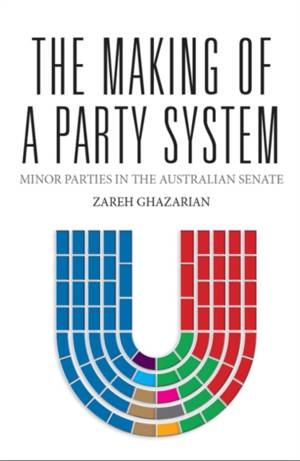
- Afhalen na 1 uur in een winkel met voorraad
- Gratis thuislevering in België vanaf € 30
- Ruim aanbod met 7 miljoen producten
- Afhalen na 1 uur in een winkel met voorraad
- Gratis thuislevering in België vanaf € 30
- Ruim aanbod met 7 miljoen producten
Zoeken
€ 54,45
+ 108 punten
Omschrijving
Minor parties have come a long way in Australia. From an era where there were no minor parties in the national parliament, they have become crucial players in shaping government policy and the political debate. This book charts the rise of minor parties in the Australian Senate since the end of the Second World War and constructs an analytical framework to explain how they became the powerful actors they are today. It shows that there has been a change in the type of minor party elected. Rather than be created as a result of a split in a major party, newer minor parties have been mobilised by broad social movements with the aim of advancing specific policy agendas. By shedding light on these parties, the book shows how minor parties have impacted the Australian political system and how they look set to remain an important component of governance in the future
Specificaties
Betrokkenen
- Auteur(s):
- Uitgeverij:
Inhoud
- Aantal bladzijden:
- 256
- Taal:
- Engels
- Reeks:
Eigenschappen
- Productcode (EAN):
- 9781922235923
- Verschijningsdatum:
- 1/07/2015
- Uitvoering:
- Paperback
- Formaat:
- Trade paperback (VS)
- Afmetingen:
- 150 mm x 231 mm
- Gewicht:
- 381 g

Alleen bij Standaard Boekhandel
+ 108 punten op je klantenkaart van Standaard Boekhandel
Beoordelingen
We publiceren alleen reviews die voldoen aan de voorwaarden voor reviews. Bekijk onze voorwaarden voor reviews.








